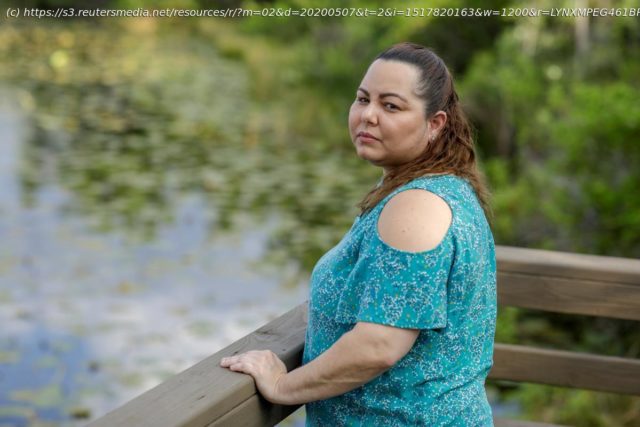For Claudia Alejandra, unemployment has become a full-time job.
For Claudia Alejandra, unemployment has become a full-time job.
Since losing her position at the makeup counter at the Macy’s department store in Orlando, Florida, on March 28, Alejandra spends her days trying to secure the unemployment benefits that should have arrived weeks ago, sometimes placing more than 100 calls a day.
The online application, a 10-hour ordeal of error messages, ended with a notice that her identity could not be verified. If she’s lucky, she’ll reach a representative who will say there’s nothing they can do to help. Otherwise, it’s a busy signal, or an hours-long wait on hold, followed by a sudden hang-up.
Alejandra, 37, cashed out her retirement fund — $800, a year’s worth of savings — to make the monthly payments on her 2010 Mazda, but doesn’t know how she’ll pay the rent for her studio apartment or her phone bill. Longer-term goals — a promotion, a family, a house of her own — seem even more elusive.
Alejandra’s experience is similar to that of more than two dozen Americans thrown out of work during the coronavirus pandemic who Reuters interviewed over the past week.
While U. S. government guidelines say jobless workers who qualify for assistance should get payments within three weeks of applying, many — like Alejandra — are waiting twice that long. Increasingly desperate, some are lining up at food banks or bargaining with landlords to postpone bills. Most fill their days seeking answers from overwhelmed state bureaucracies.
Alejandra has not heard anything from the state — though she has gotten a fundraising email from Republican Senator Rick Scott, who set up the current unemployment system during his tenure as governor.
“I feel like the government is failing us,” she said in a telephone interview.
Florida has overhauled and expanded the computer system and brought in 2,000 agents to field calls, and plans an investigation of the system’s failings, Governor Ron DeSantis said at a Monday news conference. People who applied in March and haven’t gotten payments yet likely have not provided all of the required information or might not be eligible, he said.
“You’ve started to see a really significant volume of payments going out, and it’s really taken a major overhaul behind the scenes,” he said. His office did not respond to an email with detailed questions on the situation.
In the past six weeks, states have struggled to process over 33 million jobless claims, more than they typically see in a year. That figure does not capture those who have been unable to even file a claim due to bureaucratic hurdles — up to 14 million more, according to an Economic Policy Institute study released last week.
The Reuters interviews across four states — Florida, Michigan, Arizona and Minnesota — revealed a wide disparity in whether or when people received payments depending on where they live. In Minnesota, where state employees field queries on social media platforms as well as by phone, six out of seven jobless people said they were getting benefits — sometimes more than they were earning before.
In Florida, where a buggy computer system has spurred widespread outrage, only three out of eight people said they were getting payments, while all six people interviewed in Arizona and all eight in Michigan said they had not yet received a payment.
The interviews, to be sure, do not represent a scientific sample of Americans’ experiences with jobless benefit systems. But the people interviewed described similar situations in each state.
Home
United States
USA — Events 'The government is failing us': Laid-off Americans struggle in coronavirus crisis






